News & Blogs
Exploring Japanese Bento Culture
Bento Origins: From Ancient Beginnings to Modern Adaptations
Cultivating Culinary Creativity in the Dynamic World of Bento
The Timeless Appeal of Homemade Bento and TREHA® as a Secret Ingredient
In this blog, we touch on diverse topics about Japanese food cultures, practices together with the culinary secret, TREHA®, and its important role in the Japanese food industry. We hope our blog helps you obtain in-depth knowledge of the secrets and science behind Japanese cuisine, shared from our kitchen, to yours.
Introduction to the World of Japanese Bento Culture
You may have heard of "bento 弁当" and even enjoyed one yourself. The concept of boxed lunch is rapidly spreading worldwide, with major cities like New York in the United States and Paris in France embracing this portable meal. A bento typically consists of cooked rice or other staple foods alongside various side dishes like meat and vegetables, all neatly packed into a single container. Each package is meticulously arranged to offer balanced nutrition and an appealing presentation, creating a complete meal experience.
In Japan, homemade or store-bought bento boxes are a common sight, enjoyed by people from all walks of life. These boxes are readily available across the country, from mobile vendors to convenience stores, supermarkets, and department stores. Some enthusiasts take bento-making to the next level by creating visually stunning boxes known as "kyaraben" ( or charaben) , short for “character bento,” featuring animals or manga characters. With the widespread availability of refrigerators and microwaves in modern Japan, there has been a surge in the popularity of frozen bento box delivery services. Frozen bento helps reduce food waste and provides convenient meal options, particularly for the elderly. As we delve deeper into Japanese bento culture, it becomes clear that these portable meals are not just a convenient food option but also a cherished culinary tradition.
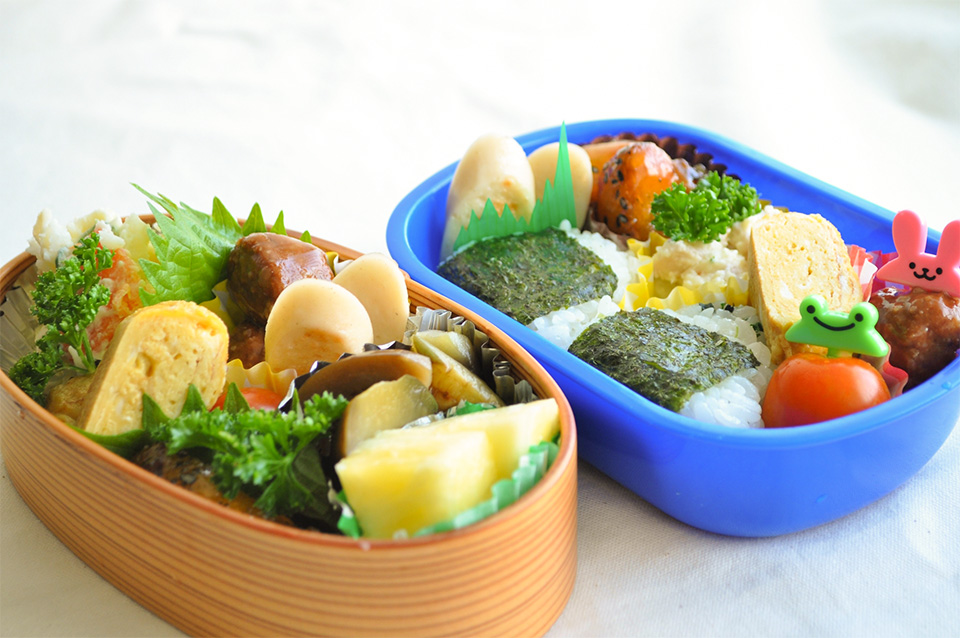
Origin of Bento: From Ancient Beginnings to Modern Adaptations
The origin of bento traces back to around the 5th century when people started carrying simple, long-lasting foods like dried cooked rice or onigiri for meals during hunting or farming. Dried cooked rice, considered the cornerstone of emergency food, is prepared by dehydrating steamed rice to prevent spoilage, capable of lasting over 20 years if properly stored. It offers versatility in consumption methods, easily rehydrated by soaking in hot water or enjoyed as is. While recent advancements in freeze-drying technology have transformed emergency food, the essence of dried rice as the ultimate emergency food remains unchanged, offering the same quality as modern alternatives.
The evolution into the modern-day bento began around the 16th century when people's basic needs for living were met, and they started going out for cherry blossom viewing or shrine and temple visits. Beautifully crafted bento boxes became common essentials for outings, depicted in historical artworks sharing stacked boxes of meals, reminiscent of modern-day osechi dishes during festive occasions.
In modern Japan, approximately 40% of Japanese people enjoy bento boxes weekly, often opting for affordable and simple varieties available in convenience stores, supermarkets, and the bustling streets of Tokyo. Its popularity stems from widespread availability, affordability, diverse variety, and satisfying taste and portion size. The portability and flexibility of bento boxes allow people to enjoy meals according to their schedule, place, or situation, seamlessly integrating into Japanese culture. Whether consumed during work breaks, communal office dining, weekend leisure activities, or quick dinner options, bento boxes cater to diverse lifestyles, reflecting their widespread utilization across different walks of life in modern times.
Shaping Culinary Creativity in the Ever-Changing World of Bento
Crafting Homemade Bento(手作り弁当)
Despite the widespread availability of bento boxes across Japan, there has been a notable surge in homemade bento making. Particularly during the COVID-19 pandemic-induced increase in time spent at home, many have discovered the gratification of crafting personalized bento boxes, transforming it into a hobby for various purposes. Some seek to showcase their creations on social media, others aim to surprise friends and families, while many simply derive joy from bringing smiles to their loved ones. This surge has led to the emergence of bento artistry, featuring popular characters or adorned with intricate designs such as flowers and animals. These enthusiasts devote considerable effort to their creations, despite their ephemeral nature. In Japan, such visually captivating bento boxes are affectionately termed "kyaraben," a portmanteau of "character bento."
Delightful Kyaraben Creations(キャラ弁)
While character bento (kyaraben, キャラ弁) boxes are undoubtedly visually captivating, they transcend mere aesthetics, offering substantial nutritional value. The vibrant and diverse ingredients used not only create appealing visuals but also contribute to a well-balanced diet, enriching the dining experience. Moreover, the sheer delight of beholding these charming bento creations enhances the enjoyment of consuming them. Even the most discerning of eaters, including picky children, may find themselves enticed by the allure of kyaraben.
In Japan, an extensive array of tools and supplies is readily available, facilitating the creation of character bento with ease. This accessibility has contributed to the growing number of enthusiasts taking up bento artistry. Moreover, there has been a gradual expansion of the trend beyond Japan's borders, as more individuals worldwide embrace the appeal of character bento. Witnessing the proliferation of kyaraben, alongside the shared enjoyment of crafting and consuming them, is truly heartwarming.
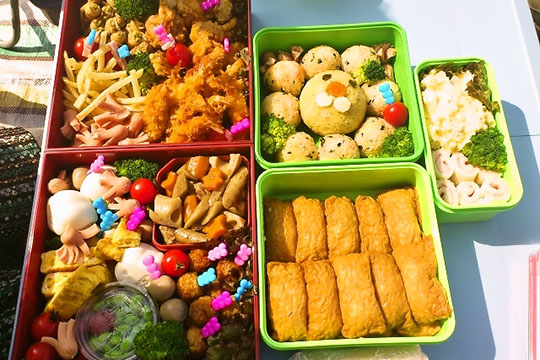
Microwaveable and Delicious Frozen Bento(冷凍弁当)
Amidst busy schedules or for individuals preferring convenience, particularly the elderly and singles, cooking can be a challenge. However, relying solely on convenience stores for meals can result in nutritional imbalances and flavor monotony. The emergence of frozen bento delivery subscriptions addresses these concerns. The prevalent use of household appliances throughout Japan, with refrigerators at 98% and microwaves at 96%, has facilitated the expansion of this delivery system. In colloquial Japanese, reheating food in a microwave is often referred to as "chin suru," a term derived from the beep ("chin") signaling the heating process's completion. It's commonplace to hear the question "Chin suru?" asked to confirm if food is being reheated, a cultural nuance perhaps unique to Japan.
Another driving force behind the increasing popularity of frozen bento lies in combating food waste. Daily, convenience stores discard vast quantities of bento due to expiration, posing a significant issue in Japan. Freezing bento extends its shelf life, effectively reducing waste. Despite past perceptions of frozen bento being less appetizing, advancements in freezing technology have made them enjoyable even after thawing. With a diverse selection available, individuals can stock up and choose their favorites at any time. Convenience stores have also begun offering frozen bento to meet this growing demand.
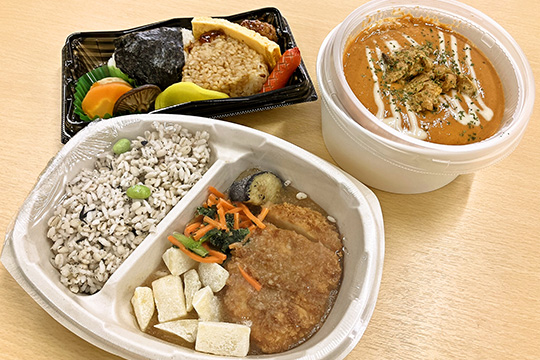
Bento boxes from supermarkets or convenience stores typically cost around 400 yen each ($2.57 as of April 2024). From the top left, clockwise: Room temperature (onigiri bento) , Refrigerated (butter chicken curry), and Frozen (chicken cutlet with rice ).
Home Delivered Bento(宅配弁当)
An increasing aging population has led to a surge in demand for bento delivery services. As grocery shopping and cooking become challenging for many elderly individuals, these services offer solutions to address nutritional imbalances and decreased appetite. Curated for nutritional balance and variety, bento delivery services prevent meal fatigue. The number of establishments providing such services is on the rise and is expected to continue increasing. Featuring an array of ingredients conveniently packed into a single container, these services effectively meet consumers' needs.
Upscale Bento Selection(高級弁当)
Upscale bento delivery services specialize in high-quality ingredients such as premium meat cuts, sashimi, and meticulously prepared dishes like tempura (recipe) . These luxury offerings cater to discerning palates, with demand surging during the pandemic's dining restrictions and persisting today. High-end bento allows individuals to savor restaurant-quality flavors and international cuisines from the comfort of their homes. While traditional homemade New Year's osechi dishes were once commonplace, they are now predominantly purchased. Osechi offerings range from luxurious options from high-end restaurants to more affordable selections found in supermarkets, with many willing to spare no expense to celebrate the New Year.
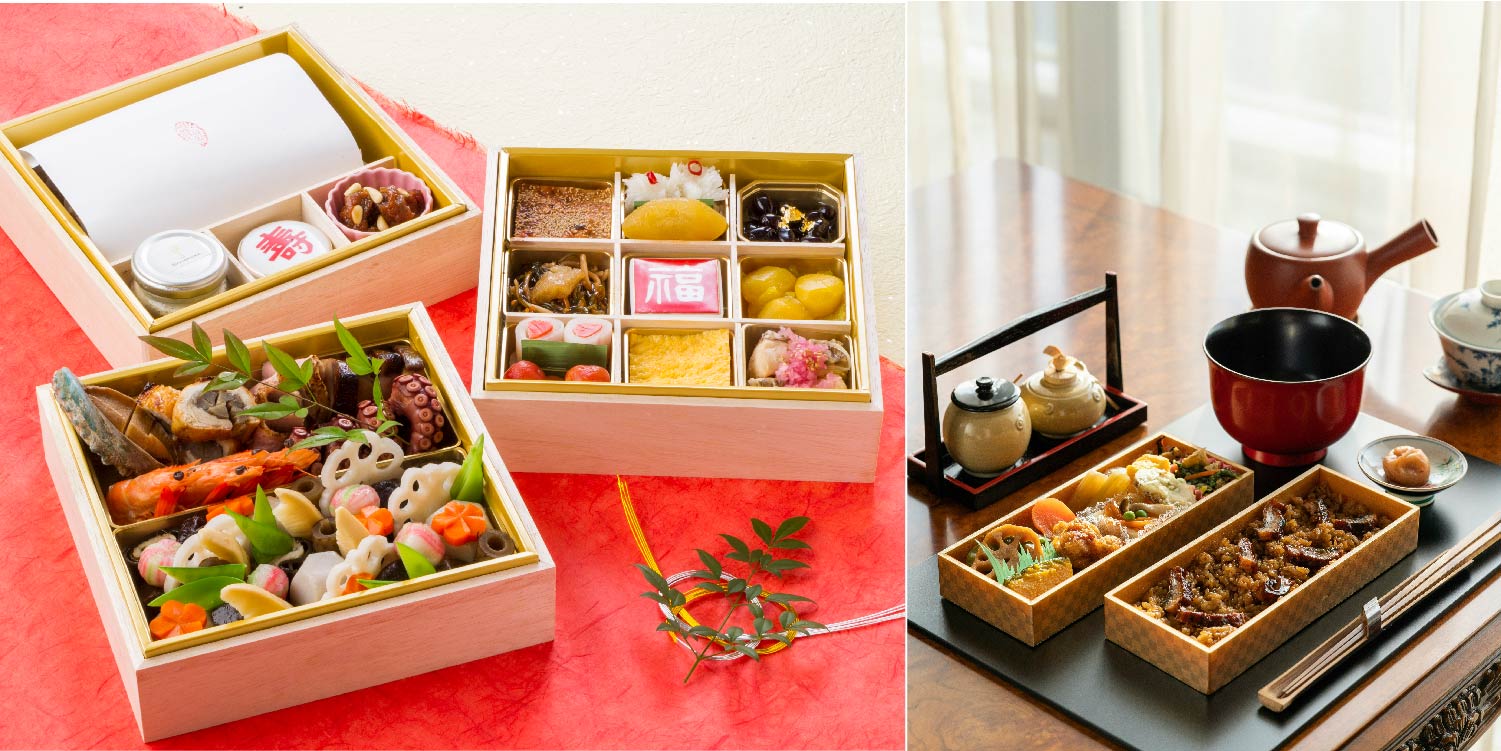
Beautifully prepared New Year’s dishes (Osechi-ryori) on the left side was created by Chef Kunikazu Shimomura of MOTOMACHI SHIMOMURA, a MICHELIN Plate Japanese cuisine restaurant in Yokohama.
Enduring Charm of Homemade Bento and the Secret Ingredient TREHA®
In my youth, bento boxes were reserved for memorable occasions like school field trips, picnics, or beach outings. However, as times have evolved, bento has seamlessly integrated into everyday life, no longer confined to special events. Yet, homemade bento continues to hold a cherished spot in our hearts, especially when enjoyed during outdoor activities like picnics, cherry blossom viewing, or beach trips. Despite the abundance of delicious food options readily available today, there's something uniquely special about homemade bento that never fails to bring joy.
TREHA® is a common ingredient in bento boxes, offering several benefits to enhance the overall dining experience. When added before cooking rice, TREHA® ensures that the rice remains moist and enjoyable, even after it cools down. Similarly, when used in the preparation of meat or fish, TREHA® helps to suppress any unwanted off-notes while retaining the fresh texture, ensuring a delightful eating experience even after heating. Additionally, TREHA® enhances freeze-resistance, making it perfect for frozen bento, which maintains its deliciousness even after thawing. We encourage everyone to give it a try and experience the difference TREHA® can make.
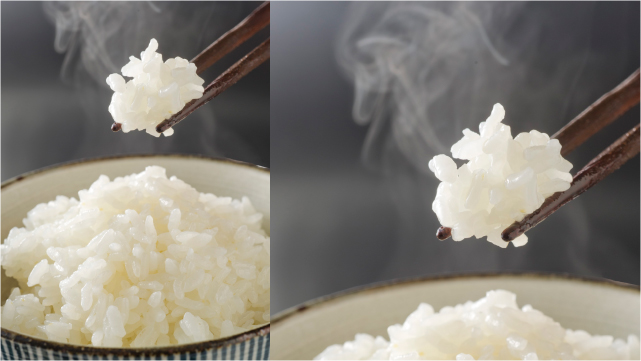
Click here to request "TREHA® for Rice," which showcases the TREHA® benefits for rice applications. This offer is exclusive to corporate users and food professionals.
Did you find this blog interesting?
Please share it with your friends in the food service industry.
We regularly update the blog about the food culture of Japan, where TREHA® was discovered for culinary applications.
Click here and send us a message to subscribe.
Or hit us up on Instagram @trehalose_sensei!
You might also be interested in:
A good place to get fancy bento boxes : デパ地下 depachika (Food section in the basement of a department store)
Exclusive interview with Chef Meguro, the authentic Edomae sushi master in Tokyo
Exclusive interview with professor Toru Suzuki, an authority on the phenomenon of freezing and the science of frozen foods:
#1 of 3, #2 of 3, #3 of 3


